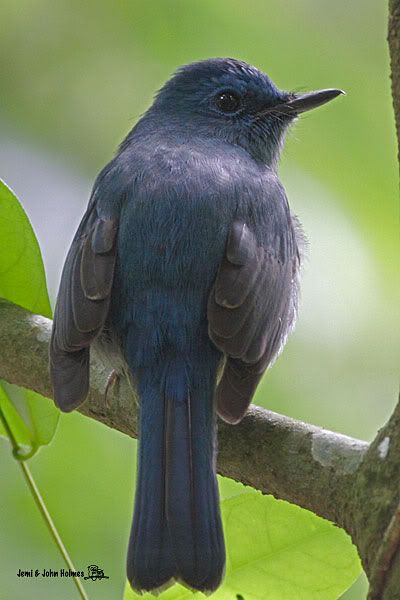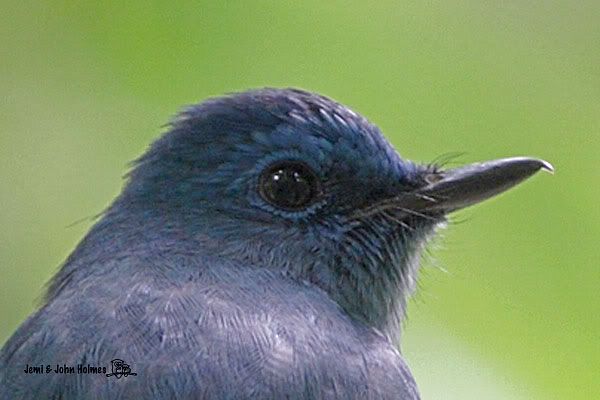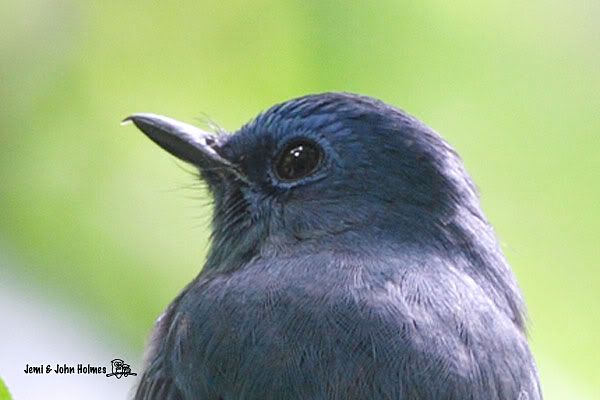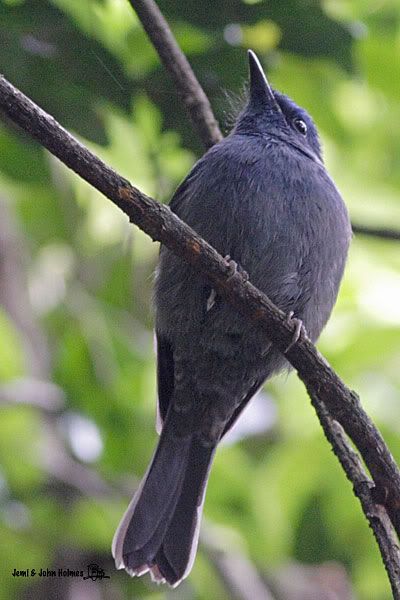Hi Mike Leven, Mike Turnbull, and "L-mike",
Here are some shots of Pale Blue Flycatcher, taken by Jemi in Jianfengling, Hainan in November 2009.



As you can see, the Hainan Pale Blue Flycatchers - "diaoluoensis" can show a hook on the bill.

Undertail coverts show some barring too, on Hainan birds.
Apart from that, I'll let the photos speak for themselves, and people can interpret them as they will.
With digital photos processed and viewed on various computer monitors, I'm sure colours are not always "true"
I guess behaviour is a factor in identification - Verditer really does perch prominently. Pale Blue is usually well below the canopy !
As others have posted, it would be nice if "L-mike" would tell us the location of the mystery flycatcher.
Happy New Year to All !!!
[
Last edited by John Holmes at 31/12/2009 12:07 ]


